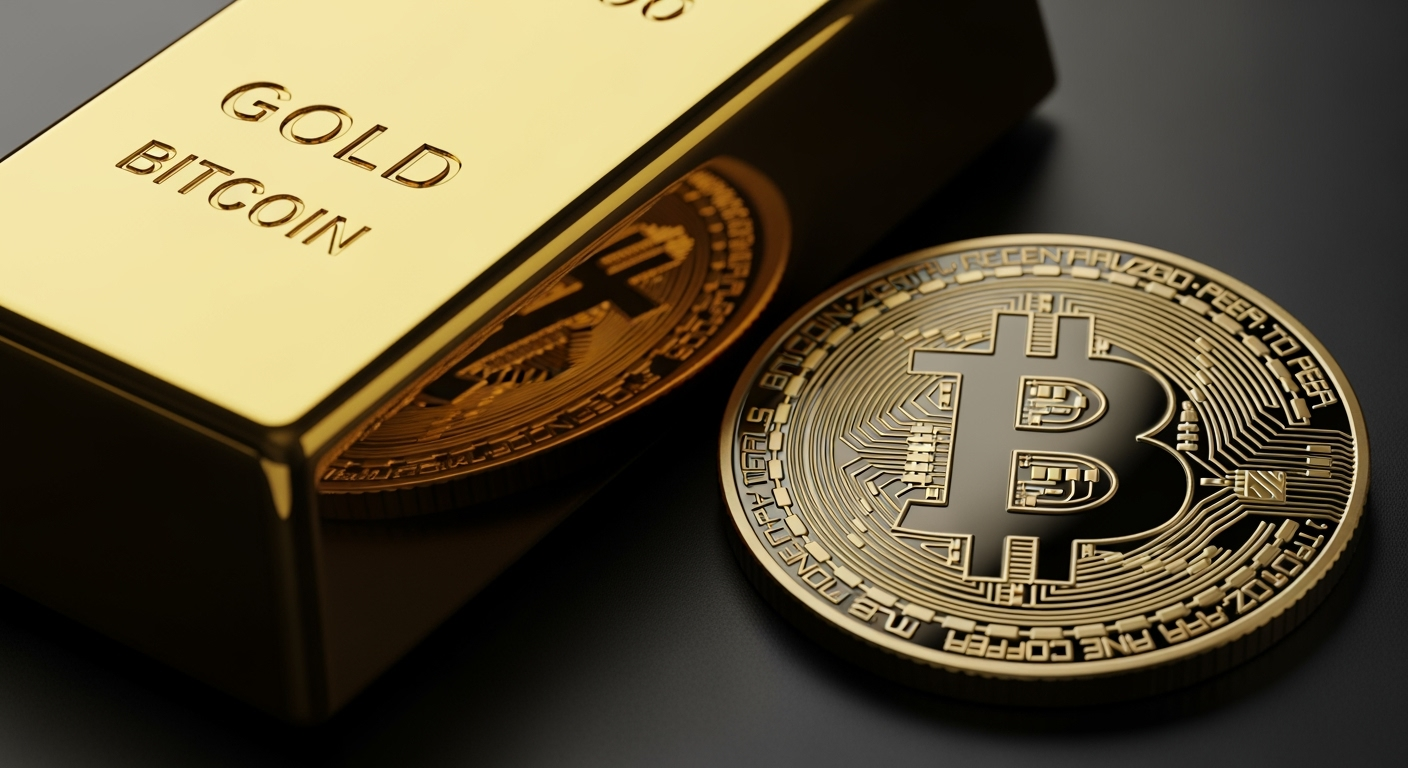Related Articles

China's Ambitious Pursuit: Challenging America's AI Dominance




The financial world is witnessing a remarkable phenomenon as both gold, the perennial safe-haven asset, and Bitcoin, the pioneering cryptocurrency, have surged to consecutive record highs. This synchronized ascent reflects a complex interplay of macroeconomic forces, geopolitical uncertainties, and evolving investor sentiment, signaling a profound recalibration of value in an era of persistent financial anxiety and technological disruption. From central bank buying sprees to the mainstreaming of digital assets, a confluence of factors is driving this unprecedented rally, compelling investors to seek refuge and opportunity beyond traditional asset classes.
A pervasive sense of global economic uncertainty forms the bedrock of the current rallies in both gold and Bitcoin. Fears surrounding inflation, weakening fiat currencies, and mounting government debt burdens are propelling investors towards assets perceived as reliable stores of value. Gold, historically a bulwark against economic instability, has seen its allure magnified by these concerns, with its price surpassing $2,700 per ounce in September 2024, climbing above $2,900 in February 2025, and hitting $3,500 by April 2025, even flirting with $4,000 per ounce in October 2025. Simultaneously, Bitcoin, often dubbed "digital gold," has also benefited from this narrative, with its value surpassing $100,000 in December 2024, reaching $108,099 in January 2025, and surging past $125,000 in October 2025.
Expectations of interest rate cuts by the Federal Reserve have further fueled demand for non-yielding assets. As central banks signal a pivot towards more accommodative monetary policies, the opportunity cost of holding assets like gold, which do not generate interest, diminishes, making them comparatively more attractive. This environment also encourages investors to explore riskier assets, benefiting Bitcoin. Moreover, a weakening U.S. dollar, evidenced by a nearly 10% slip against other currencies this year, makes dollar-denominated assets like gold more affordable for international buyers, stimulating demand. This trend is intertwined with broader discussions of de-dollarization, particularly among emerging economies.
The yellow metal's ascent is profoundly influenced by unprecedented levels of central bank buying. For the third consecutive year, central banks globally have acquired over 1,000 metric tons of gold, a pace double that observed before 2022. In the first half of 2024 alone, net gold purchases by central banks reached a record 483 tonnes. Nations such as China, Poland, Uzbekistan, and India are leading this accumulation, driven by a strategic imperative to diversify reserves away from the U.S. dollar, hedge against inflation, and mitigate risks associated with potential sanctions. For the first time since 1996, central bank gold reserves have surpassed holdings of U.S. Treasury securities, underscoring this significant shift in global reserve management.
Beyond economic strategy, geopolitical tensions continue to reinforce gold's role as a quintessential safe haven. Ongoing conflicts in the Middle East and Ukraine, coupled with political instability in Europe and concerns over U.S. government shutdown threats and presidential elections, have ratcheted up fear in financial markets. In such volatile periods, gold consistently emerges as the investment of choice, providing a counterbalance to portfolio losses as currencies fluctuate and stock markets become volatile. Its ability to preserve purchasing power during currency devaluation, as seen historically, further solidifies its position.
Bitcoin's surge to new peaks is being propelled by a unique blend of structural market developments and growing mainstream acceptance. A pivotal moment came with the U.S. Securities and Exchange Commission's approval of spot Bitcoin Exchange-Traded Funds (ETFs) in January 2024. These ETFs, which hold actual Bitcoin as their underlying asset, have opened the cryptocurrency market to a broader range of traditional investors, including institutions, pension funds, and retail investors, seeking exposure to Bitcoin through regulated and familiar investment vehicles. The significant inflows into these ETFs since their launch underscore their role in driving demand and legitimizing Bitcoin within the financial system.
Another fundamental driver is Bitcoin's programmed scarcity mechanism: the halving event. The most recent halving occurred on April 20, 2024, reducing the reward for mining new blocks by 50%. This pre-programmed event systematically slows the rate at which new Bitcoins enter circulation, effectively decreasing supply. Historically, halving events have preceded significant price increases due to the resulting scarcity. With a fixed total supply of 21 million coins, Bitcoin's disinflationary design stands in stark contrast to fiat currencies, enhancing its appeal as a hedge against inflation.
Political developments have also played a role. The reelection of Donald Trump and his administration's perceived pro-crypto stance, including promises of relaxed regulatory restrictions, have further boosted investor confidence and contributed to Bitcoin's rally. This sentiment, combined with ongoing macroeconomic concerns, positions Bitcoin as an increasingly attractive, albeit volatile, alternative asset.
While both gold and Bitcoin are benefiting from the "debasement trade"—a collective investor bet that scarce, hard assets will outperform fiat currencies in an era of mounting government debt and persistent inflation—their trajectories and underlying dynamics exhibit notable differences. Gold maintains its ancient reputation as a primary safe-haven asset, particularly during severe geopolitical crises, where its physical nature and long-standing acceptance offer a unique appeal. Central bank accumulation underscores its traditional role as a bedrock of national reserves.
Bitcoin, conversely, despite being increasingly viewed as an inflation hedge and "digital gold," still retains a higher correlation with riskier assets like technology stocks and can exhibit greater short-term volatility. While it offers theoretical censorship resistance, its dependence on digital infrastructure and exchanges differentiates its practical utility during certain crises. Nevertheless, its rapid growth, innovative technology, and growing institutional embrace suggest an evolving role in the global financial landscape.
The current record highs for both gold and Bitcoin are not merely transient market fluctuations but rather a reflection of profound shifts in global economic and geopolitical paradigms. From central banks diversifying their reserves to individual investors seeking hedges against inflation and currency debasement, the demand for assets outside the traditional fiat system is robust. Gold's timeless appeal as a physical safe haven, bolstered by institutional buying and geopolitical anxieties, continues to affirm its foundational role. Simultaneously, Bitcoin's maturation, driven by accessible investment vehicles like spot ETFs and its inherent scarcity mechanism, positions it as a significant digital counterpart, challenging conventional notions of value. As the global financial system navigates ongoing uncertainties, the dual rally of these seemingly disparate assets highlights a collective pivot towards alternative stores of wealth, signaling a potential new era for investment strategies centered on resilience and long-term value preservation.